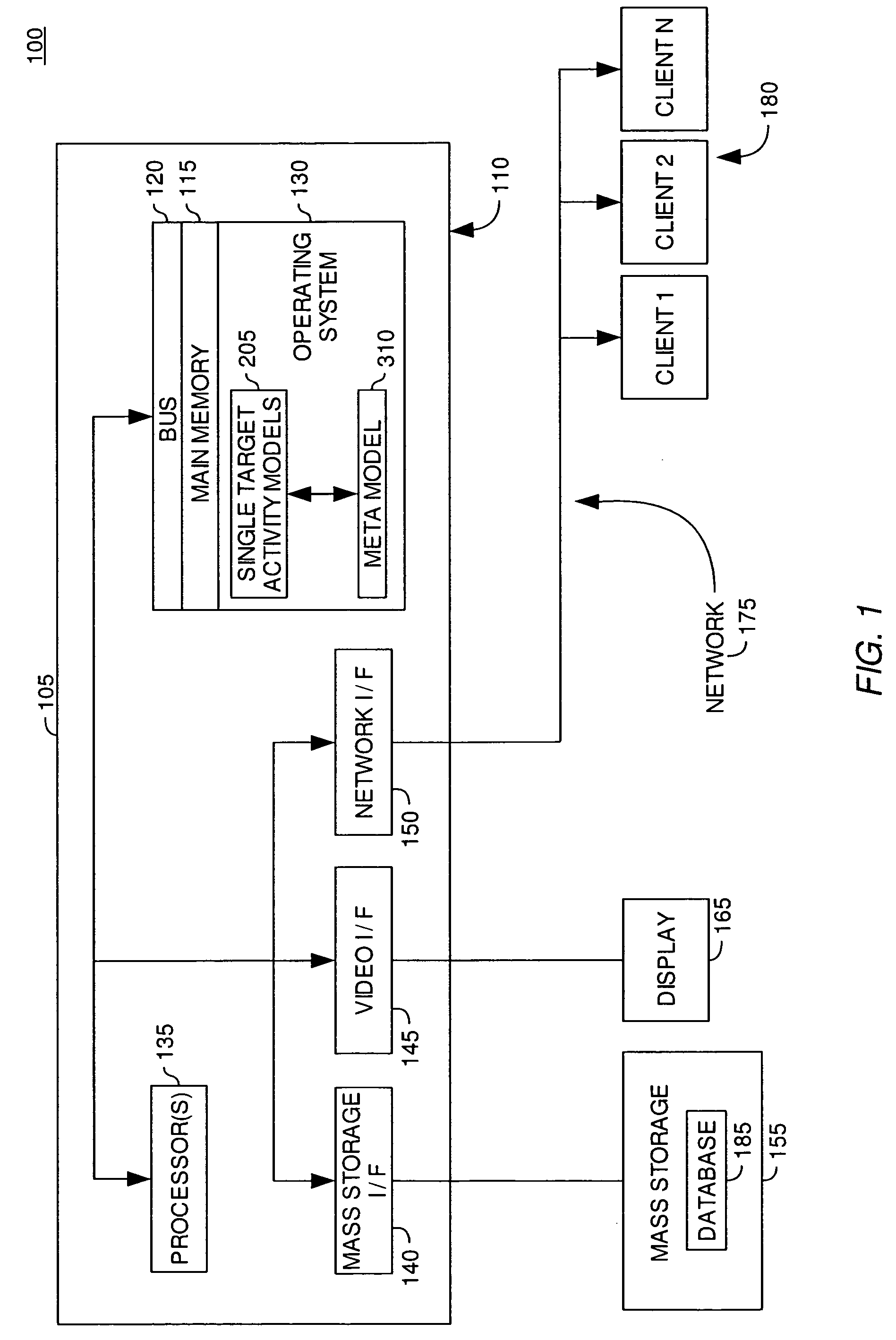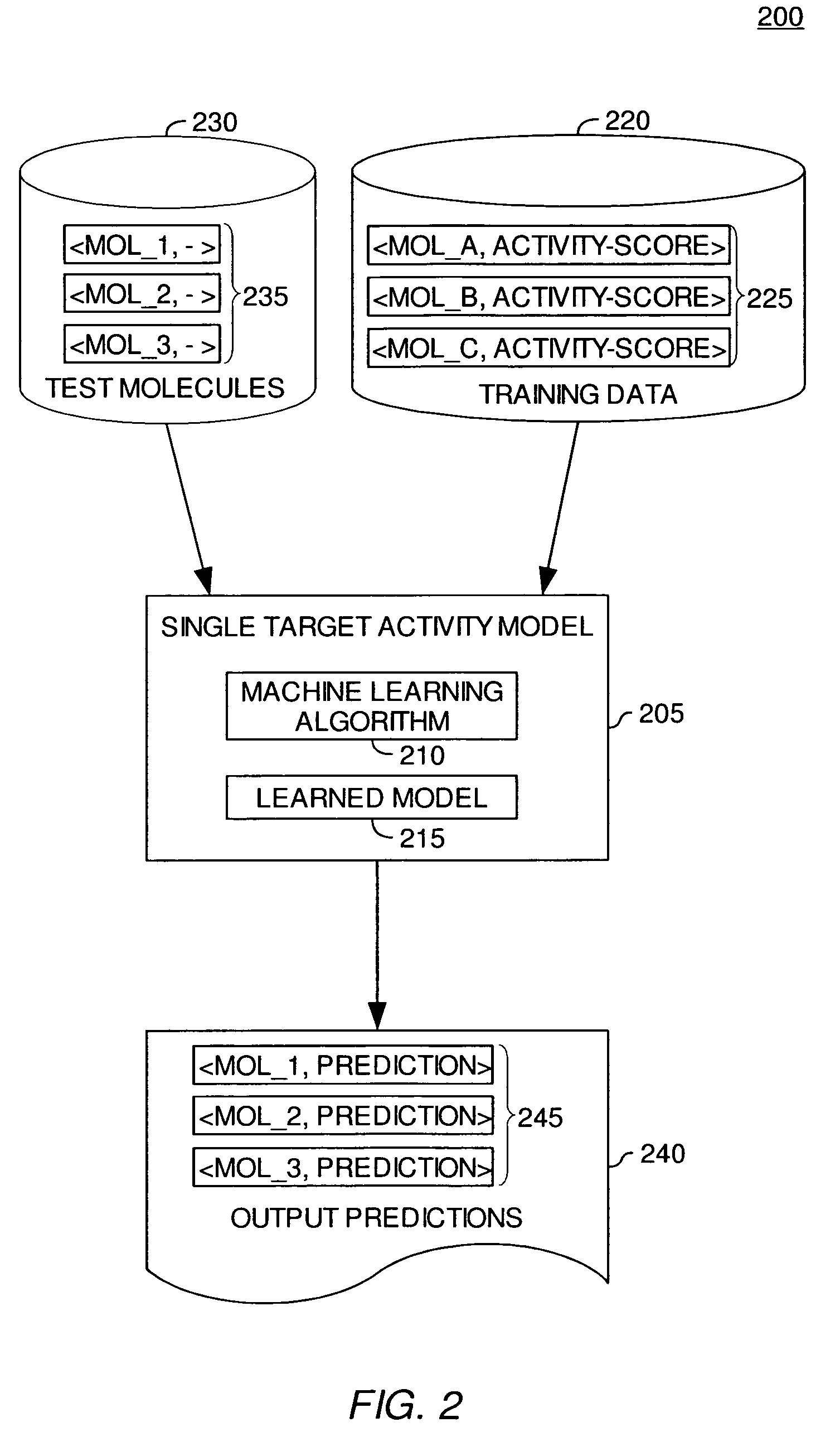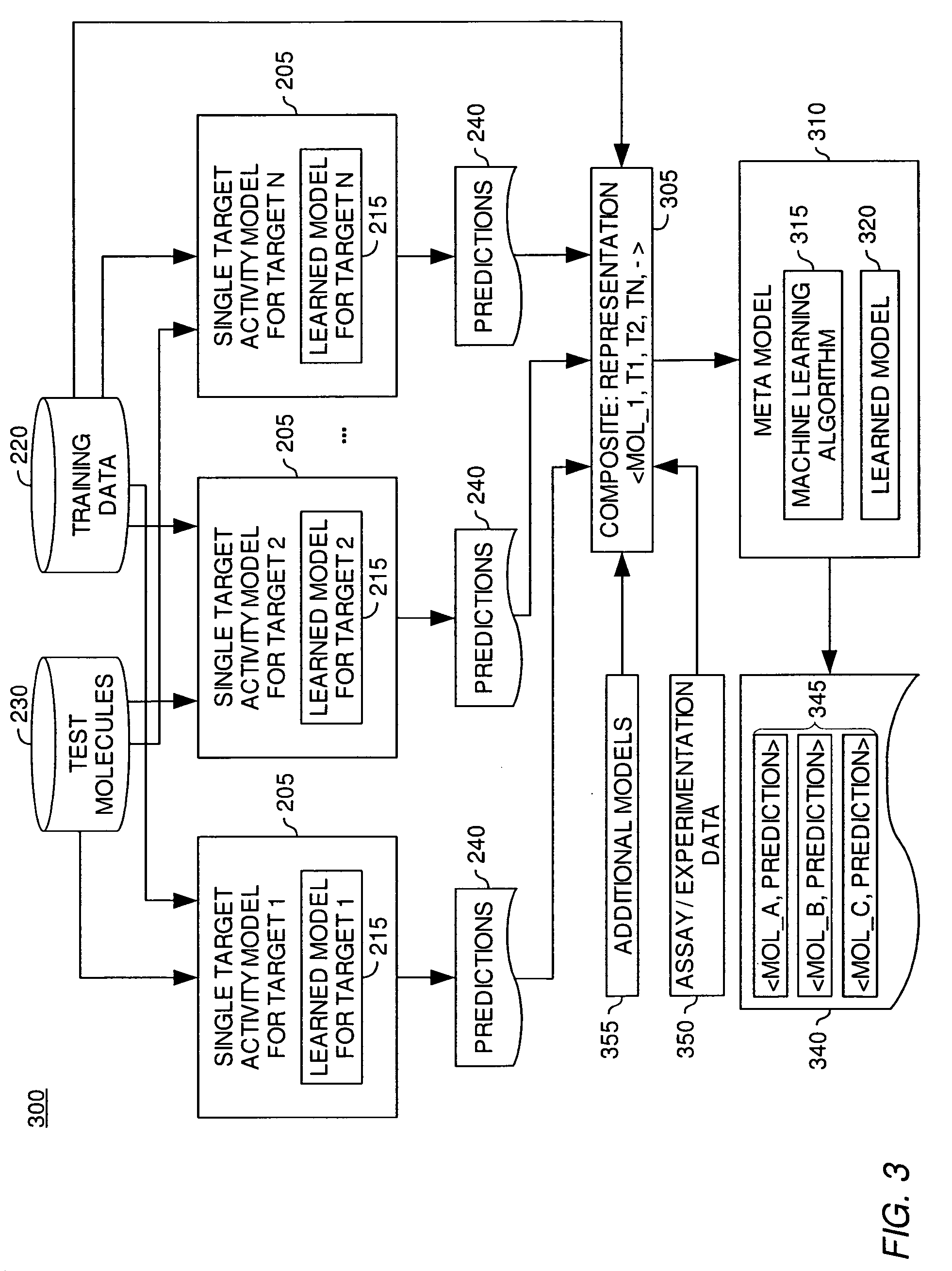Modeling biological effects of molecules using molecular property models
a molecular property model and molecular structure technology, applied in the field of machine learning, can solve the problems of inability to perform more than limited number of candidate molecules, inability to model inability to predict the biological effects of molecules,
- Summary
- Abstract
- Description
- Claims
- Application Information
AI Technical Summary
Problems solved by technology
Method used
Image
Examples
Embodiment Construction
[0021]Generally, machine learning techniques may be used to develop a software application—referred to as a model—that improves its ability to perform a task as it analyzes more data related to the task. Often, the task is to predict an unknown attribute or quantity from known information (e.g., the binding affinity of a molecule against a specific protein target). Typically, a machine learning model is trained using a set of training examples. Each training example may include an example of an object, along with a value for the otherwise unknown property of the object (e.g., a representation of a molecule and a known binding affinity for the molecule and a protein). By processing a set of training examples that includes both an object and a property value for the object, the model “learns” what attributes or characteristics of the object are associated with a particular property value. This “learning” may then be used to predict the property or to predict a classification for other...
PUM
| Property | Measurement | Unit |
|---|---|---|
| molecular weight | aaaaa | aaaaa |
| electron density | aaaaa | aaaaa |
| binding affinity | aaaaa | aaaaa |
Abstract
Description
Claims
Application Information
 Login to View More
Login to View More - R&D
- Intellectual Property
- Life Sciences
- Materials
- Tech Scout
- Unparalleled Data Quality
- Higher Quality Content
- 60% Fewer Hallucinations
Browse by: Latest US Patents, China's latest patents, Technical Efficacy Thesaurus, Application Domain, Technology Topic, Popular Technical Reports.
© 2025 PatSnap. All rights reserved.Legal|Privacy policy|Modern Slavery Act Transparency Statement|Sitemap|About US| Contact US: help@patsnap.com



